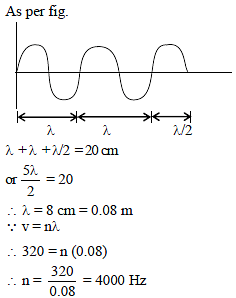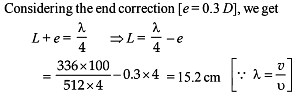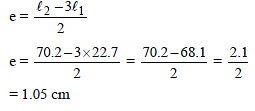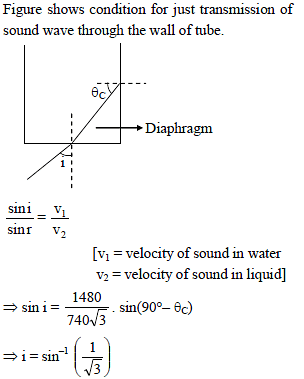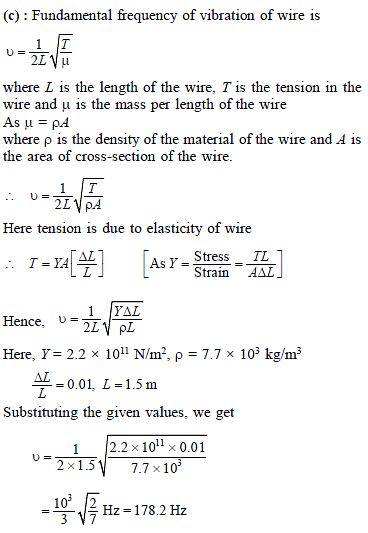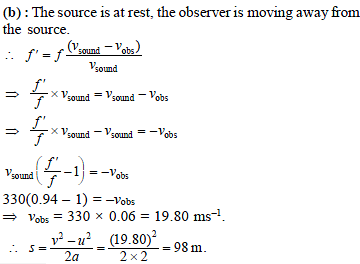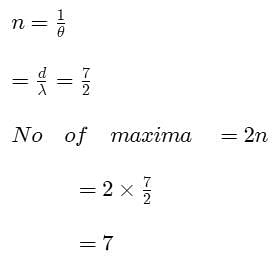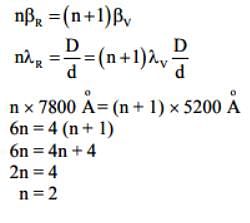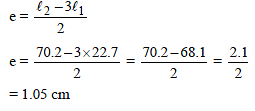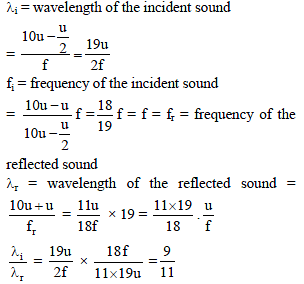Test: Wave Motion and Sound Wave(19 Oct) - JEE MCQ
15 Questions MCQ Test Daily Test for JEE Preparation - Test: Wave Motion and Sound Wave(19 Oct)
For the wave shown in figure, the wavelength and frequency, if its speed is 320 m/sec, are -
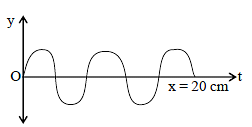

Which relation is giving the correct information for the shown tuning forks –
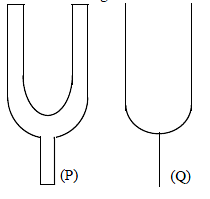

| 1 Crore+ students have signed up on EduRev. Have you? Download the App |
A tuning fork of frequency n is sounded at the open end of a long cylindrical tube having a side opening and fitted with a movable reflecting piston. On moving the piston through 9 cm, the intensity of sound heard by the listener changes from maximum to minimum. If speed of sound is 360 m/s, value of n is
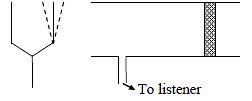
In a resonance pipe the first and second resonance are obtained at lengths 22.7 cm and 70.2 cm respectively. What will be the end correction -
One end of a thin metal tube is closed by thin diaphragm of latex and the tube is lower in water with closed end downward. The tube is filled with a liquid 'x'. A plane progressive wave inside water hits the diaphragm making an angle 'θ' with its normal. Assuming Snell's law to hold true for sound. Maximum angle 'θ' for which sound is not transmitted through the walls of tube is (velocity of sound in liquid x = 740√3 m/s and in water = 1480 m/s)
In YDSE how many maxima can be obtained on the screen if wavelength of light used is 200nm and d = 700 nm.
In a YDSE, the central bright fringe can be identified.
In Young's double slit experiment, the wavelength of red light is 7800 Å and that of blue light is 5200 Å. The value of n for which nth bright band due to red light coincides with (n + 1)th bright band due to blue light, is
The path difference between two wavefronts emitted by coherent sources of wavelength 5460 Å is 2.1 micron . The phase difference between the wavefronts at that point is _
The equation for two waves obtained by two light sources are as given below :
y1= A1 sin 3wt, y2 = A2 cos (3wt + p/6). What will be the value of phase difference at the time t _
In a resonance pipe the first and second resonance are obtained at lengths 22.7 cm and 70.2 cm respectively. What will be the end correction -
A wall is moving with velocity u and a source of sound moves with velocity u/2 in the same direction as shown in the figure. Assuming that the sound travels with velocity 10u. The ratio of incident sound wavelength on the wall to the reflected sound wavelength by the wall, is equal to -
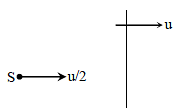
|
360 tests
|


